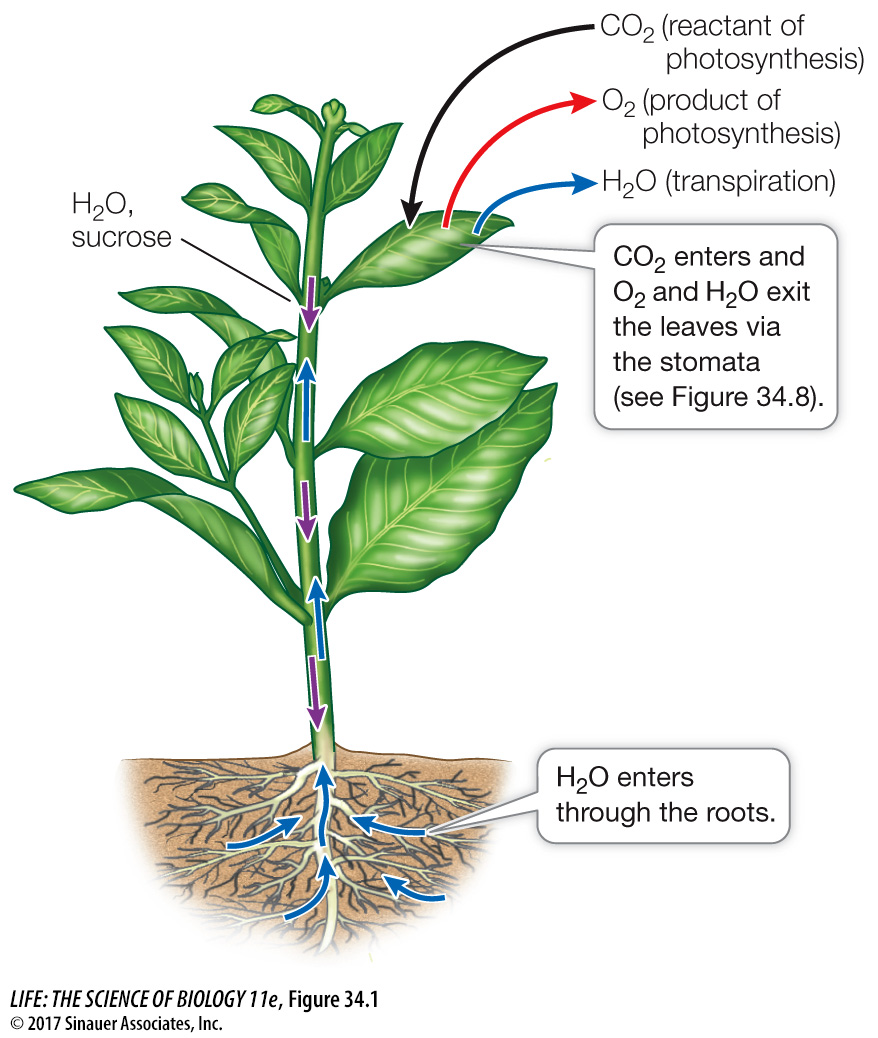key concept 34.1 Plants Acquire Water and Minerals from the Soil
736
Terrestrial plants must obtain both water and mineral nutrients from the soil, through their roots, and the water is transported through the plant in xylem tissue. Carbohydrates and other important materials mostly originate in leaves and circulate through the phloem (Figure 34.1). Water is required for photosynthesis in the leaves (see Key Concept 10.1), for transporting solutes between plant organs, for cooling the plant, and for developing the internal pressure that supports the plant body.

focus your learning
Water potential is determined by solute potential and pressure potential.
Membrane proteins form channels (aquaporins, ion channels) and act as pumps that help move materials across cell membranes.
The two main pathways to get water from the soil into the xylem are the apoplast and the symplast.
Movement of water and ions across a cell membrane can be impeded.
The Casparian strip prevents water and ions in the apoplast from crossing the endodermis; to reach the xylem, they must enter the symplast.
The minerals that a plant needs are transported along with the water. Several steps in water and mineral transport will be considered in this chapter. In this section we will focus on the first part of the journey—